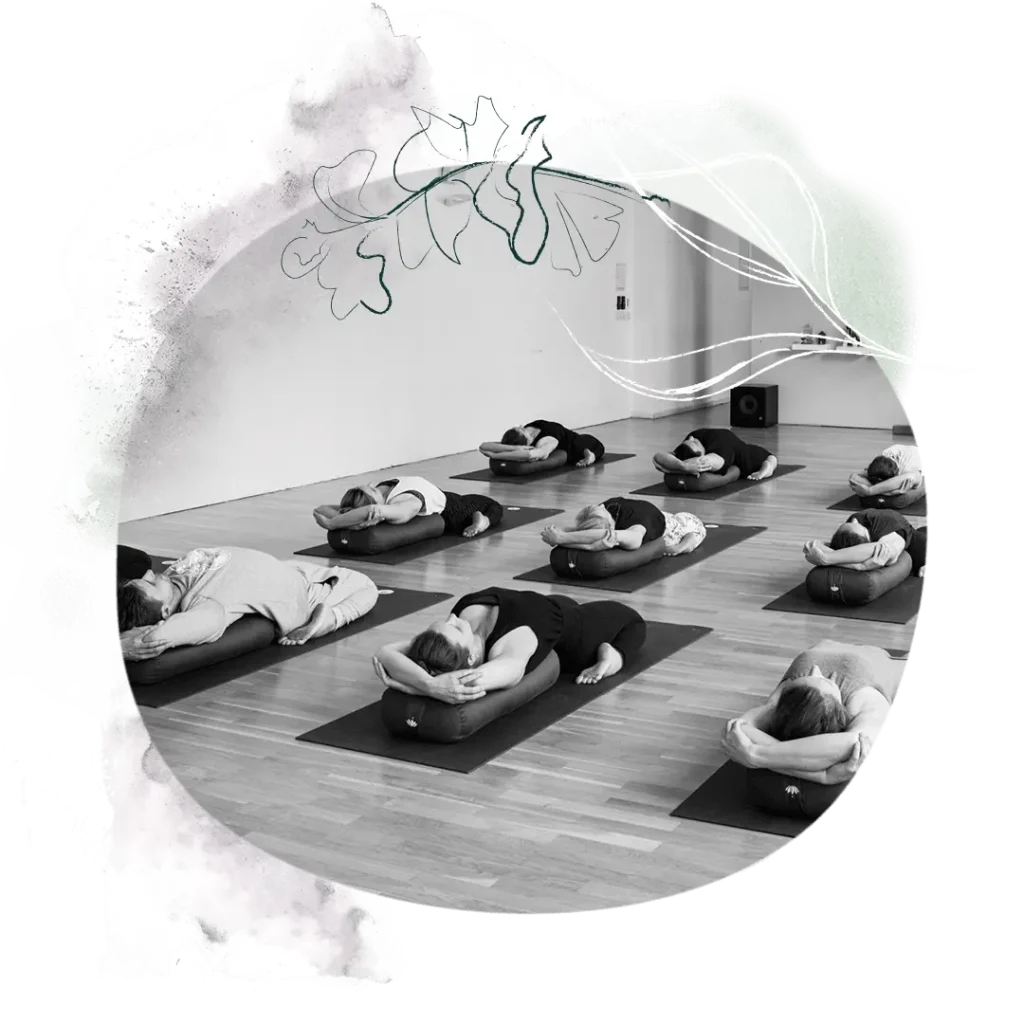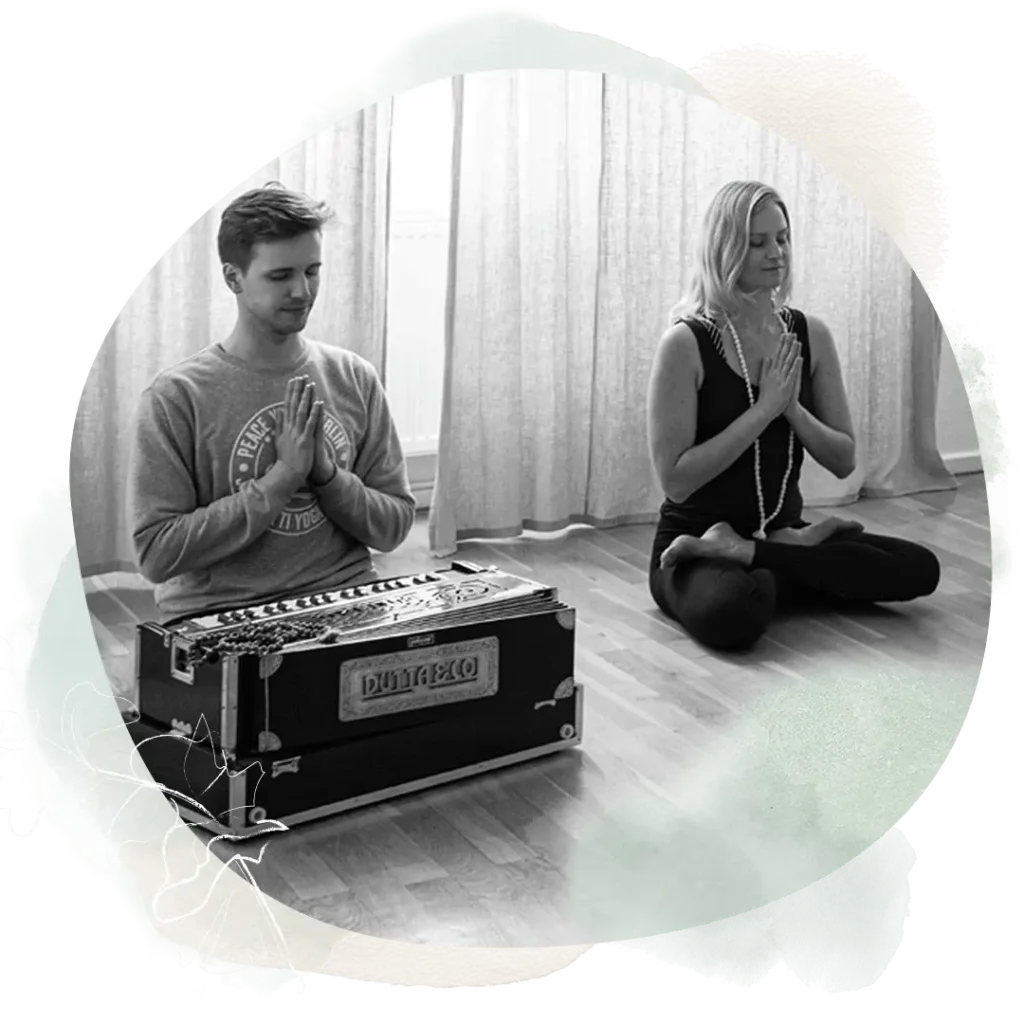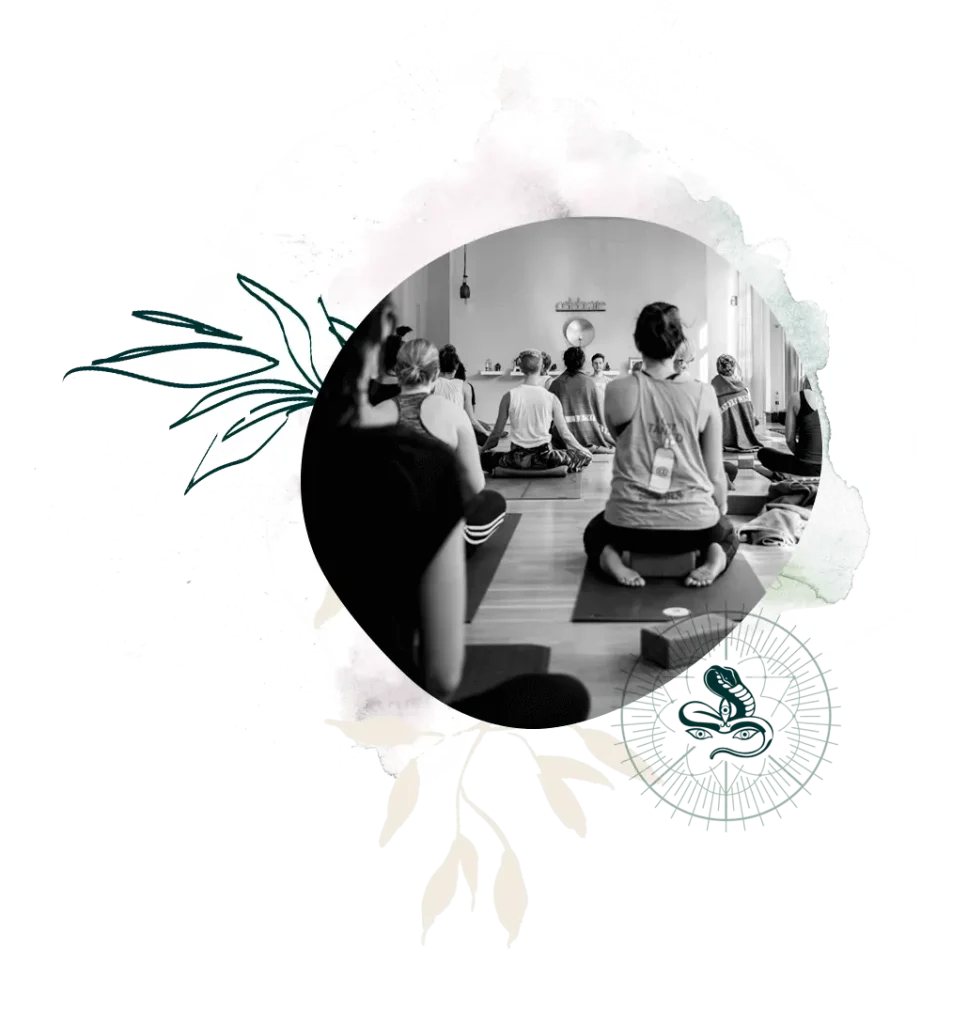What distinguishes Jivamukti Yoga from other yoga styles?
Authored: Moritz Ulrich | Reading time: 4 minutes | last edited: 27/08/2025
The most important facts in brief:
Holistic styleJivamukti combines asanas, meditation, mantras and philosophy in every class.
Five pillarsPractice is based on ahimsa (non-violence), bhakti (devotion), dhyana (meditation), nada (sound) and shastra (scriptures).
Spiritual activismFocus on vegan lifestyle, environmental ethics and physically demanding assisted practice.
What is Jivamukti Yoga?
Jivamukti yoga is a modern style of yoga that originated in New York in the 1980s. At a time when yoga classes often felt like aerobics, the founders Sharon Gannon and David Life developed a practice that went far beyond pure physical exercises. Their goal: to make yoga a holistic experience and lead people into a deeper spiritual experience.
The roots of Jivamukti Yoga lie in classical yoga philosophy. Sharon and David combined asanas (postures), pranayama (breathing exercises), meditation, mantra chanting and the study of spiritual texts. The result is a style of yoga that combines physical practice with spiritual and ethical development.
Three teachers had a particular influence: Shri Brahmananda Sarasvati, Sri K. Patthabi Jois and Swami Nirmalananda. Topics such as animal welfare, veganism and a mindful approach to the environment are still a central component of Jivamukti Yoga today.
Who Jivamukti Yoga practises yoga is not only a demanding physical practice, but also an invitation to understand yoga as a philosophy of life.
The elements of Jivamukti Yoga
Sarasvati, a Sanskrit expert and neuropsychiatrist, introduced aspects of sound, vibrations and the chanting of mantras into the method. He was also an expert in yoga philosophy and meditation. Jois' influence lies above all in his work with asanas, vinyasa and the so-called hands-on assists, which play an important role in Jivamukti yoga. The sequences are physically demanding, strengthen the body and keep it flexible. Nirmalananda inspired Sharon with his practice of silence and his idea of spiritual activism, which also brought the vegan lifestyle into the method. Jivamukti Yoga is based on five pillars:
Dhyana - meditation and mindfulness
In every Jivamukti Open class there is a meditation, often in the form of a simple 3-step practice: 1. find your seat. 2. be still. 3. focus on the mantra "Let go". This meditation practice promotes deep mindfulness and the ability to observe things without intervening.
Nada - Music and mantras in yoga
Yoga practice sharpens our senses so that we can perceive ever more subtle vibrations, be it through sound, touch or deep feeling. Music is an important part of the Jivamukti yoga practice and should always inspire without distracting. Chanting mantras and kirtan is another way to connect with subtle vibrations.
Shastra - Yoga Philosophy
Mantras, often in Sanskrit, come from ancient scriptures. Part of Jivamukti Yoga is to study these scriptures, learn their pronunciation and understand their origin. The yoga philosophy is integrated into the dynamic yoga classes and brought to life.
Ahimsa - veganism as a yoga practice
Ahimsa, non-violence, is a central aspect of Patanjali's Yoga Sutra. One of the easiest ways to live ahimsa in everyday life is a vegan lifestyle. In addition to the positive effects on health, the environment and animals, veganism is also a yoga practice that is lived consciously.
Bhakti - devotion to the divine
The intention behind the practice is crucial. Why am I practising at all? To whom or what am I dedicating my practice? Bhakti means dedicating the yoga practice and all other actions to a higher self, a divine power or the idea of the divine.
Jivamukti Yoga compared to other yoga styles
Spiritual depth


Yoga music and chanting
Compared to styles such as Hatha or Iyengar, which are often practised without music, music plays an important role in Jivamukti yoga classes. It is perfectly attuned to the practice and supports the philosophical content of the class.
Holistic approach
Jivamukti Yoga combines aspects of Hatha, Bhakti, Karma and Raja Yoga. Working with the body, nutrition, reflecting on one's own actions, meditation, studying ancient scriptures and chanting mantras combine to create a holistic experience.

Advantages of Jivamukti yoga
- Physically demanding
The dynamic asanas promote strength, flexibility and endurance. Conscious breathing creates a holistic body practice that addresses all levels. - Mental clarity and mindfulness
Meditation and mindfulness help to reduce stress and create a deeper connection with yourself. The practice teaches you to observe before you act and thus make more conscious decisions. - Spiritual depth
The integration of yoga philosophy and ethics not only addresses the body, but also the mind and soul. - Community and connection
Jivamukti Yoga fosters a strong community of practitioners who support each other on the path to greater compassion and mindfulness.
Conclusion: Jivamukti Yoga - A holistic path for body, mind and soul
To summarise, Jivamukti Yoga offers a holistic practice that gives people the tools to be in harmony with themselves and the world. With a strong and supple body, a clear mind and a conscious approach to other beings and the environment.
The best way to experience Jivamukti Yoga is for yourself. At Peace Yoga Berlin you can try it out for 14 days and experience how it affects you on all levels.

